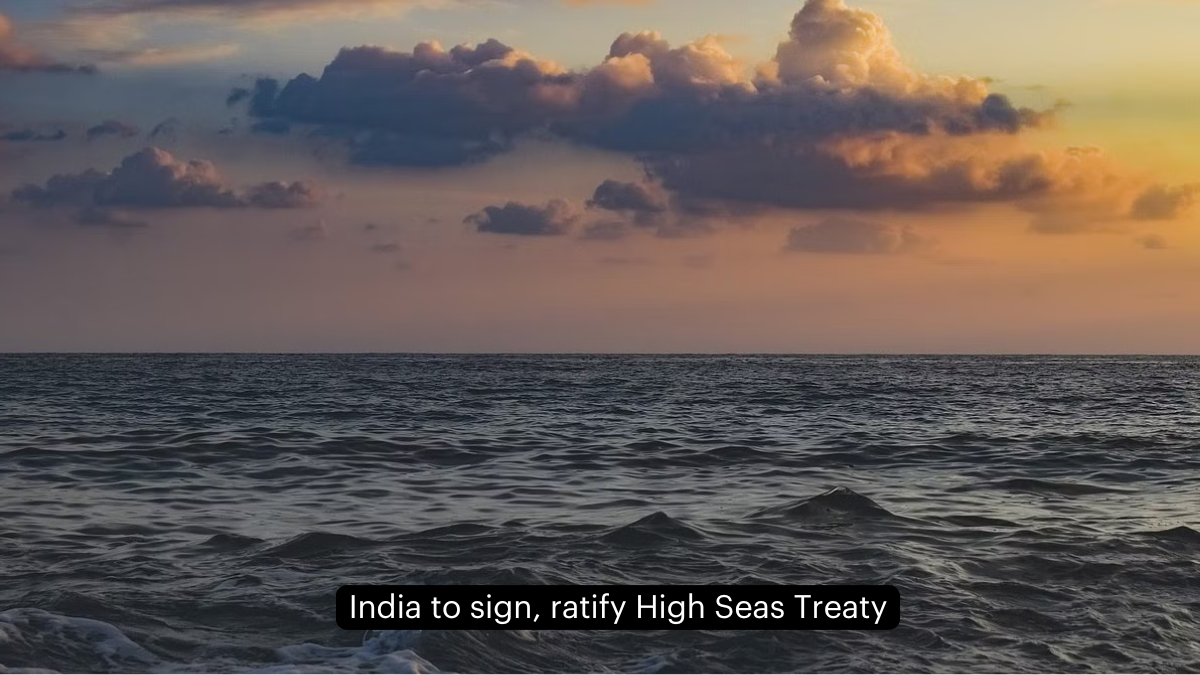India has taken a significant step towards global environmental conservation by deciding to sign and ratify the High Seas Treaty, a groundbreaking international agreement aimed at protecting and conserving biodiversity in the world’s oceans. This treaty, often compared to the 2015 Paris Agreement in terms of its scope and impact, represents a crucial milestone in global efforts to safeguard marine ecosystems.
Understanding the High Seas Treaty
What is the High Seas Treaty?
The High Seas Treaty, officially known as the agreement on Biodiversity Beyond National Jurisdictions (BBNJ), was negotiated in March 2023. It is designed to address the growing concerns about the health and sustainability of ocean ecosystems beyond national boundaries.
India’s Commitment
Science and Technology Minister Jitendra Singh announced India’s decision to sign the treaty, stating:
“India remains committed and proactive to the global cause of environmental conservation and sustainable development. We will be signing (the BBNJ Agreement) and are propitious of subsequently ratifying it through the necessary legislative processes.”
This announcement came following the endorsement of the treaty by the Cabinet on July 2, 2024.
The Importance of High Seas
Defining High Seas
The High Seas refer to the vast areas of ocean that lie outside the national boundaries of countries. These international waters constitute approximately 64% of the ocean surface and are considered international commons, open for use by all nations.
Current Regulations
The activities in these areas are governed by international and regional laws, with the most comprehensive being the UN Convention on the Law of the Seas (UNCLOS). UNCLOS defines the rights and duties of countries and establishes general principles for acceptable conduct in the oceans.
The High Seas Treaty Framework
Operating Under UNCLOS
Once ratified by the required number of countries, the High Seas Treaty will operate under the UNCLOS framework, becoming one of its implementing instruments. It will join two existing agreements under UNCLOS:
- An agreement regulating the extraction of mineral resources from ocean beds
- An agreement on the conservation of migratory fish stocks
Key Provisions of the Treaty
1. Marine Protected Areas
The treaty will define and demarcate marine protected areas in biodiversity-rich zones of the oceans that are under stress. In these areas, certain human activities, such as deep sea mining, will be prohibited or regulated, similar to national parks or protected wildlife areas on land.
2. Equitable Sharing of Benefits
The treaty aims to ensure that any benefits derived from ocean life forms, such as drug development, are considered a global common. These benefits will be free of intellectual property rights and equitably shared among all nations.
3. Environmental Impact Assessments
Commercial activities in the open oceans that are likely to cause large-scale pollution will now require an environmental impact assessment.
Ratification Process and Current Status
Requirements for Implementation
The High Seas Treaty will become international law 120 days after at least 60 countries submit their formal ratification documents.
Current Progress
As of September 2024:
- 91 countries have signed the treaty
- Only 8 countries have ratified and submitted their formal documents




 Weekly One Liners 15th to 21st of Decemb...
Weekly One Liners 15th to 21st of Decemb...
 World Basketball Day 2025 Celebrates Bas...
World Basketball Day 2025 Celebrates Bas...
 UN Celebrates Second World Meditation Da...
UN Celebrates Second World Meditation Da...







